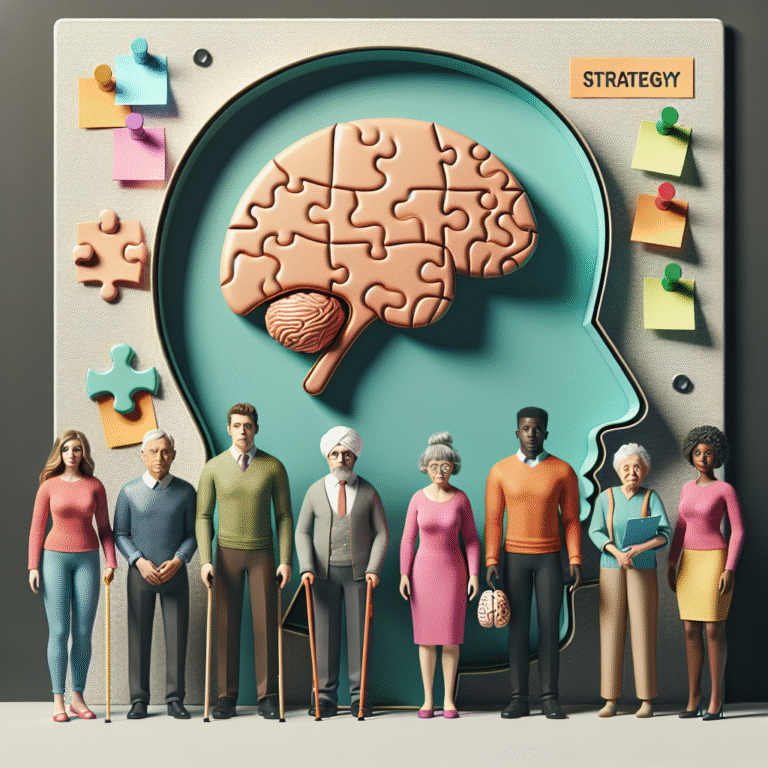
Introduction
In a world that is rapidly aging, the need for innovative solutions to support our senior population has never been more critical. As people live longer, they often face unique challenges, from mobility issues to cognitive decline. This reality necessitates a focus on tools and technologies designed specifically to assist seniors in leading independent, fulfilling lives. Welcome to A Helping Hand: Innovative Assistive Tools for Seniors, a deep dive into the essential resources that are transforming lives, enabling independence, and enhancing quality of life among the elderly community.
Understanding the Need
The Aging Population and Its Challenges
As of 2021, approximately 54 million people in the United States were aged 65 or older, a number projected to rise to 80 million by 2040 (American Community Survey, 2021). This demographic shift brings both opportunities and challenges:
- Health Concerns: With age, seniors often face multiple health issues, including arthritis, heart disease, and cognitive decline.
- Mobility Limitations: Physical limitations can lead to difficulties in performing daily activities.
- Social Isolation: Many seniors experience loneliness, affecting their mental health and overall well-being.
The Role of Assistive Tools
Assistive tools are designed to bridge the gap between these challenges and a senior’s daily life, allowing for greater independence and improved quality of life. Let’s explore some notable innovations that are helping seniors regain their autonomy and confidence.
A Closer Look at Innovative Assistive Tools
1. Mobility Aids
Mobility aids are perhaps the most recognized assistive tools for seniors. These range from simple canes to more complex mobility scooters. Here’s a closer look:
| Type of Mobility Aid | Description | Benefits |
|---|---|---|
| Canes | Lightweight, portable supports. | Improved balance and support during walking. |
| Walkers | Provide sturdy support with all four legs. | Increased stability and reduced fall risk. |
| Wheelchairs | Allow seated mobility for those unable to walk. | Enhanced freedom and independence. |
| Mobility Scooters | Electric-powered scooters for longer distances. | Greater range and ease of travel. |
Case Study: Mary’s Journey with a Mobility Scooter
Mary, a 72-year-old grandmother living in a suburban area, found herself increasingly hindered by arthritis. After acquiring a mobility scooter, she regained her ability to visit friends and attend community events. According to Mary, “Having the scooter was like receiving a new lease on life.” This case highlights how targeted mobility solutions can profoundly impact a senior’s social engagement and physical activity.
2. Home Automation Technologies
Smart home technologies have made significant headway in assisting seniors, providing automation that enhances safety and convenience.
Key Technologies Include:
- Smart Lighting: Automatically switches on and off to prevent falls.
- Voice-Activated Assistants: Devices like Amazon Echo or Google Home can help seniors manage daily tasks with voice commands.
- Smart Doorbells: Allow seniors to see and communicate with visitors without approaching the door.
Case Study: Tom’s Smart Home Transformation
Tom, 68, recently underwent surgery that made mobility challenging. With the integration of smart technologies in his home, he can now control lights and appliances with his voice. His daughter notes, “It gives him independence while I’m at work, and I don’t worry as much about his safety.” Tom’s story represents a shift towards integrating technology seamlessly into the lives of seniors, providing them autonomy without compromising safety.
3. Adaptive Eating Tools
Eating and meal preparation can become increasingly challenging for seniors with dexterity issues. Innovative adaptive utensils and kitchen tools assist in maintaining independence.
| Tool | Description | Benefits |
|---|---|---|
| Weighted Utensils | Heavier tools provide stability for shaky hands. | Easier gripping, reduced spills. |
| Built-Up Handles | Larger handles for easier gripping. | Improved comfort and control. |
| Plate Guards | Raised edges to keep food from rolling off plates. | Increased independence during meals. |
Case Study: Eleanor’s Mealtime Freedom
Eleanor, a cheerful 75-year-old, found traditional utensils increasingly frustrating due to tremors. By switching to adaptive eating tools, she regained the ability to enjoy meals independently. “It felt so empowering to eat without help. I can finally sit down and enjoy my meals,” she says, highlighting the emotional and psychological benefits of simple adaptations.
4. Communication Devices
Social interaction is crucial for emotional well-being, yet many seniors face barriers in communication. Innovative devices tailored for ease of use can bridge this gap.
Popular Communication Tools:
- Simple Smartphones: Specially designed for seniors for ease of use, with larger fonts and simplified interfaces.
- Video Calling Devices: Platforms like GrandPad provide simplified video calls to keep families connected.
Case Study: George’s Connection with Family
At 80, George often felt isolated from his grandchildren. He received a GrandPad device, allowing easy video calls. “I love seeing their faces. It’s like they’re sitting right here with me,” says George. This case illustrates the power of communication tools in combating loneliness and enhancing interpersonal connections.
5. Health Monitoring Devices
Health monitoring tools are essential for seniors to manage chronic conditions and stay in touch with healthcare providers.
| Type of Device | Description | Benefits |
|---|---|---|
| Blood Pressure Monitors | Home devices for regular health checks. | Early detection of health issues. |
| Wearable Fitness Trackers | Monitors heart rate and physical activity. | Encourages healthier lifestyle choices. |
| Medication Management Systems | Reminders to take medications. | Improved adherence to treatment plans. |
Case Study: Harriet’s Health Management
Harriet, 76, uses a wearable fitness tracker to monitor her heart health. The device alerts her when she needs to engage in more physical activity. “It helps me stay on top of my health, and I feel more in control,” she shares. By actively monitoring her health through technology, Harriet demonstrates how assistive tools can empower seniors to take charge of their wellness.
6. Cognitive Assistive Technology
For seniors experiencing cognitive decline, such as dementia or Alzheimer’s, assistive tools designed to stimulate and support cognitive functions are essential.
Notable Tools:
- Memory Aids: Digital calendars and reminder devices help manage daily tasks.
- Stimulating Games: Brain-training apps and games encourage cognitive engagement.
Case Study: James and His Memory Calendar
James, diagnosed with early-stage Alzheimer’s, uses a digital calendar that provides gentle reminders about daily activities and appointments. His daughter notes, “It allows him to maintain a sense of normalcy.” James’s story illustrates the vital role cognitive tools play in supporting memory and independence for those facing cognitive challenges.
Conclusion
The journey into senior living doesn’t have to lead to dependency and isolation. With the right tools and technologies, seniors can find new freedom and empowerment in their lives. A Helping Hand: Innovative Assistive Tools for Seniors is changing the narrative by providing seniors with the means to maintain their independence and improve their quality of life.
By integrating mobility aids, smart home technologies, adaptive eating tools, communication devices, health monitors, and cognitive aids, we can create a supportive and enriching environment for our aging loved ones.
Inspiring Action
As family members, community leaders, or caregivers, we have the power to advocate for these innovations. Encouraging our seniors to explore the world of assistive tools is not just about improving their lives; it’s about honoring their desire for autonomy and dignity.
In a world where age often comes with limitations, let’s ensure that innovative solutions are accessible. Let’s provide our loved ones with the helping hands they need to thrive.
FAQs
1. What are assistive tools for seniors?
Assistive tools are devices designed to help seniors perform daily activities more easily and maintain their independence. These can range from mobility aids to technology that assists in communication and health management.
2. How can mobility aids help seniors?
Mobility aids provide physical support for seniors, helping them maintain balance, navigate their environments safely, and reduce their risk of falls.
3. What smart technologies are effective for seniors?
Smart home technologies such as smart lighting, voice-activated assistants, and smart doorbells enhance safety and provide ease of use for seniors living independently.
4. Are adaptive eating tools necessary for seniors?
Yes, adaptive eating tools can help seniors who experience difficulties with dexterity to eat independently, improving both their nutritional intake and quality of life.
5. How do communication devices benefit seniors?
Communication devices allow seniors to stay connected with family and friends, reducing feelings of isolation and significantly enhancing their emotional well-being.
By understanding and utilizing A Helping Hand: Innovative Assistive Tools for Seniors, we can empower our aging population to live with dignity and joy, ensuring they continue to be active, engaged, and valued members of society.
















